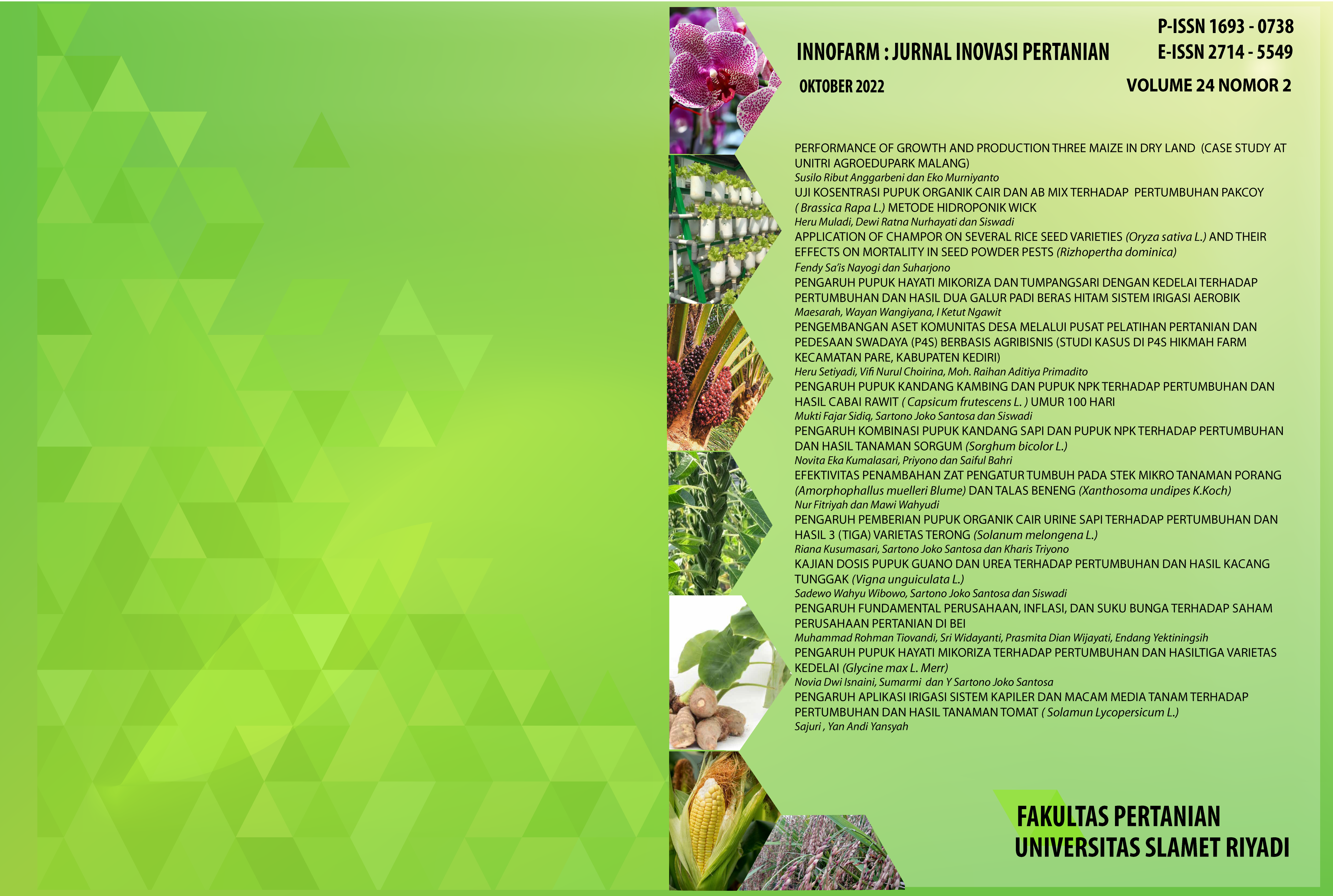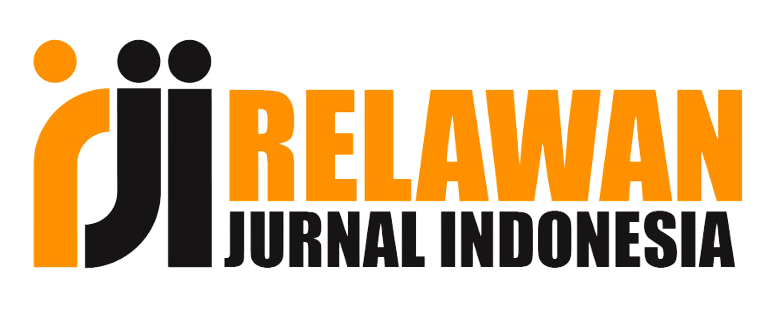ASSESSMENT OF GUANO AND UREA FERTILIZER DOSAGE ON GROWTH AND RESULTS OF COUPLE BEANS (Vigna unguiculata L.)
Keywords: Cowpea, study, dosage, fertilizer, guano, urea.
DOI:
https://doi.org/10.33061/innofarm.v24i2.7688Abstract
This research is entitled Study of Guano and Urea Fertilizer Dosage on Growth and Yield of Cowpea (Vigna unguiculata L.). The research was carried out at the Tohudan Food Crops and Horticulture Seed Garden, Karanganyar from December 2021 to February 2022. Using a 2 factor Completely Randomized Design (CRD) and 3 repetition. Guano fertilizer (G) as factor 1 consisted of 4 levels, namely: G0 (Control), G1 = guano at 4.7 grams, G2 = guano at 9.4 grams, G3 = guano at 14.1 grams. Urea fertilizer (N) as factor 2 consisted of 4 levels, namely: N0 = (Control), N1 = urea dose of 2.7 grams, N2 = urea dose of 5.4 grams, N3 = urea dose of 8.1 grams. The data were analyzed using analysis of variance with a further BNJ test with a level of = 5%. The results showed that guano fertilizer (G) had an effect on leaf number, leaf area, dry weight of stover, pod weight, seed weight and seed dry weight with the best dose of 9.4 grams/plant. Urea (N) fertilizer affected plant height, number of leaves, number of pods, pod weight and seed weight with the best dose of 5.4 grams/plant.
Downloads
Published
Issue
Section
License
Copyright (c) 2022 Sadewo Wahyu Wibowo

This work is licensed under a Creative Commons Attribution-NonCommercial 4.0 International License.
Authors who publish this journal agree to the following terms:
- Authors retain copyright and grant the journal right of first publication with the work simultaneously licensed under a Creative Commons Attribution License that allows others to share the work with an acknowledgement of the work's authorship and initial publication in this journal.
- Authors can separately make additional contractual arrangements for non-exclusive distribution published by the journal (e.g., publish it in a book), with an acknowledgement of its initial publication in this journal.
- Authors are allowed and encouraged to send their work via online (e.g., in the institutional repositories or their website) after published by the journal.


















